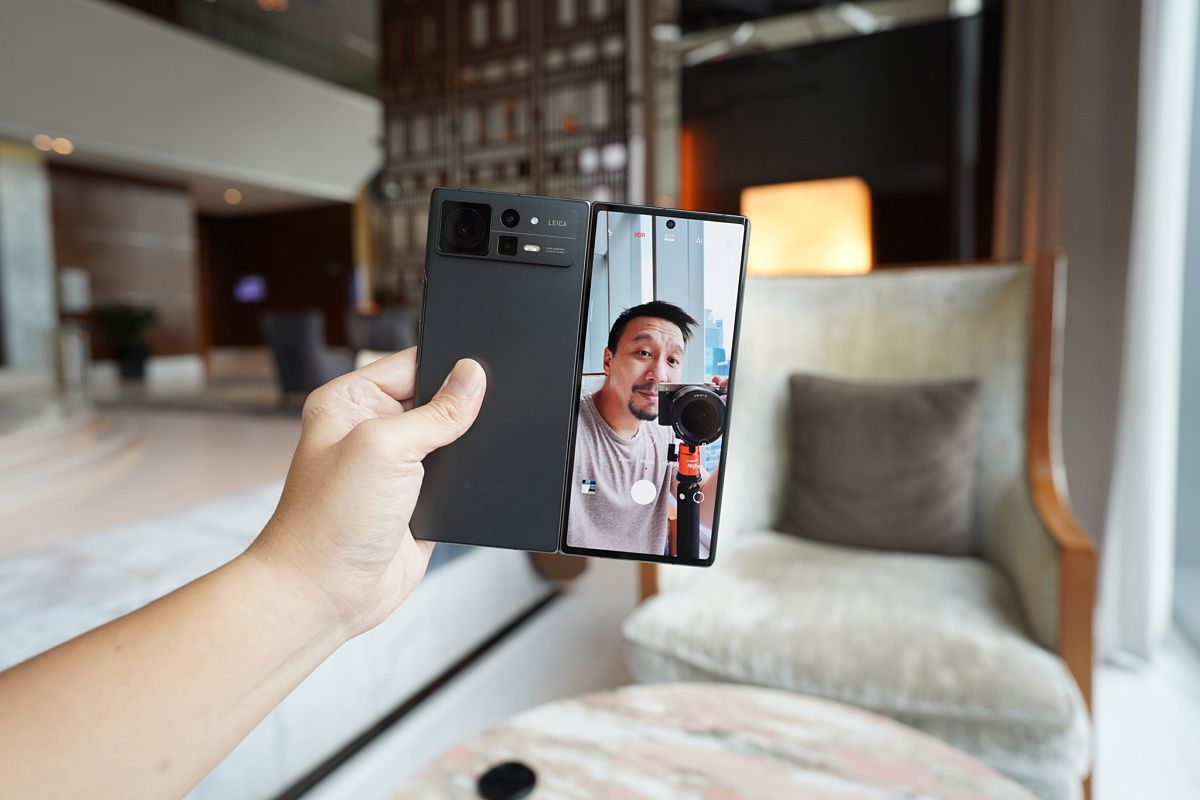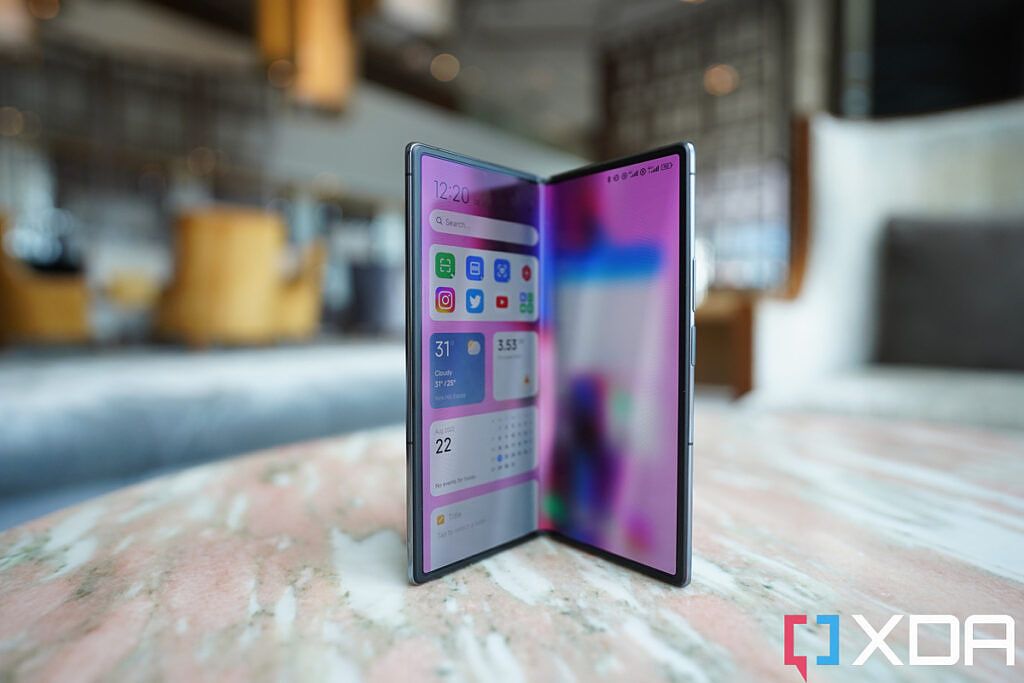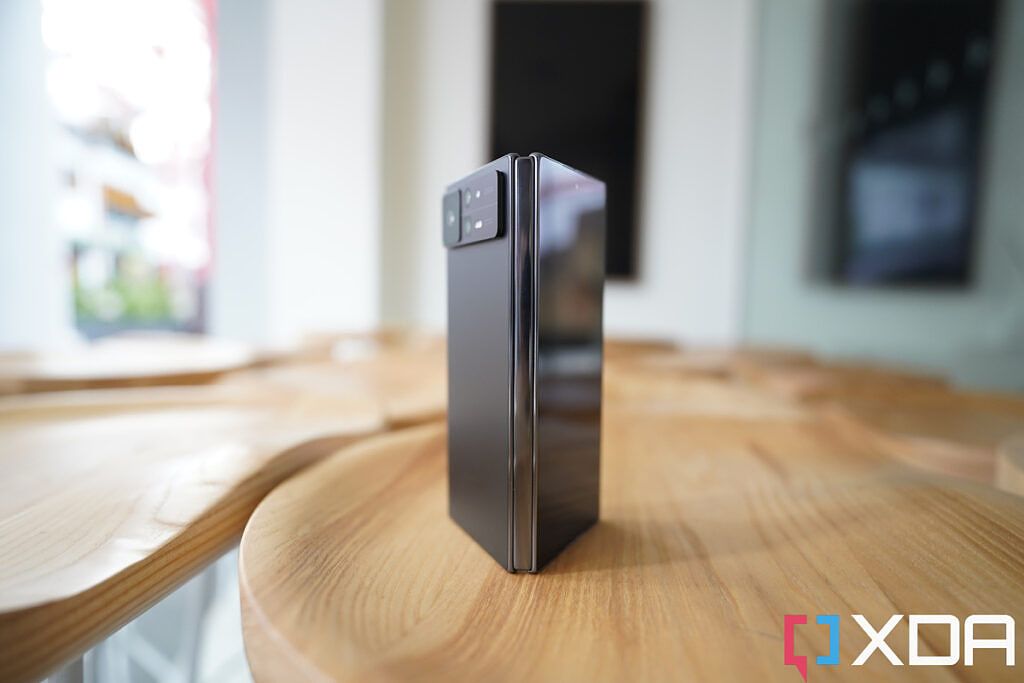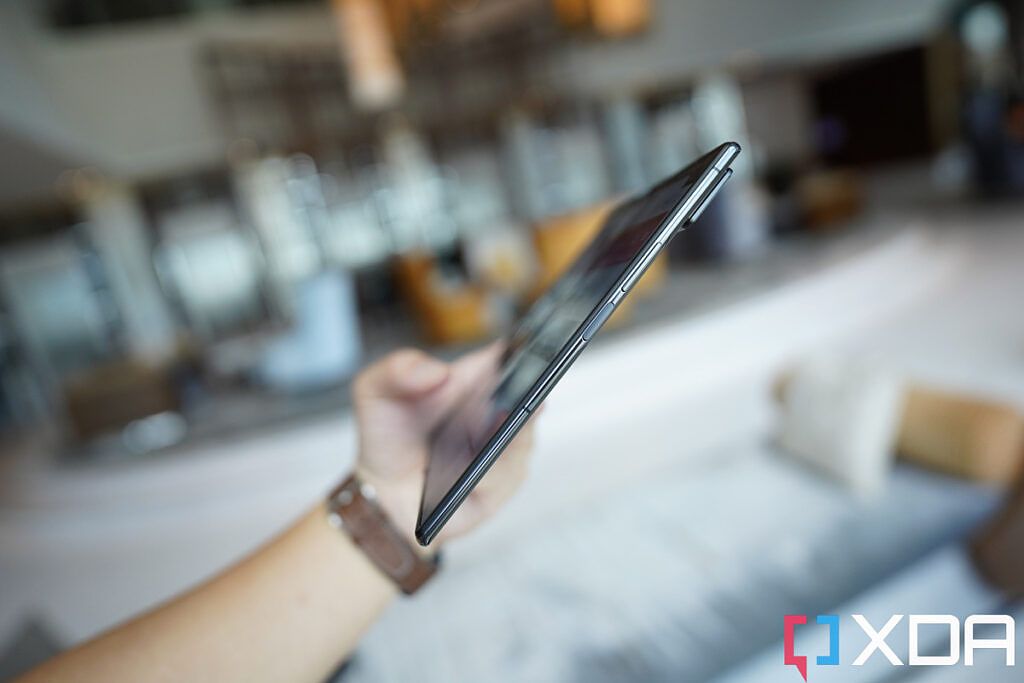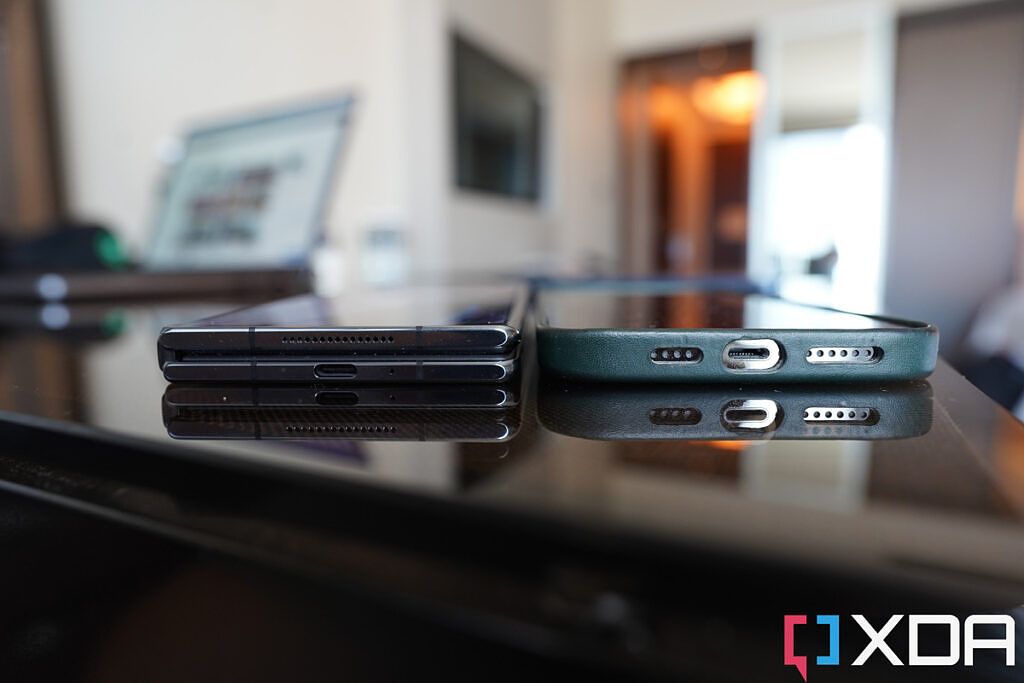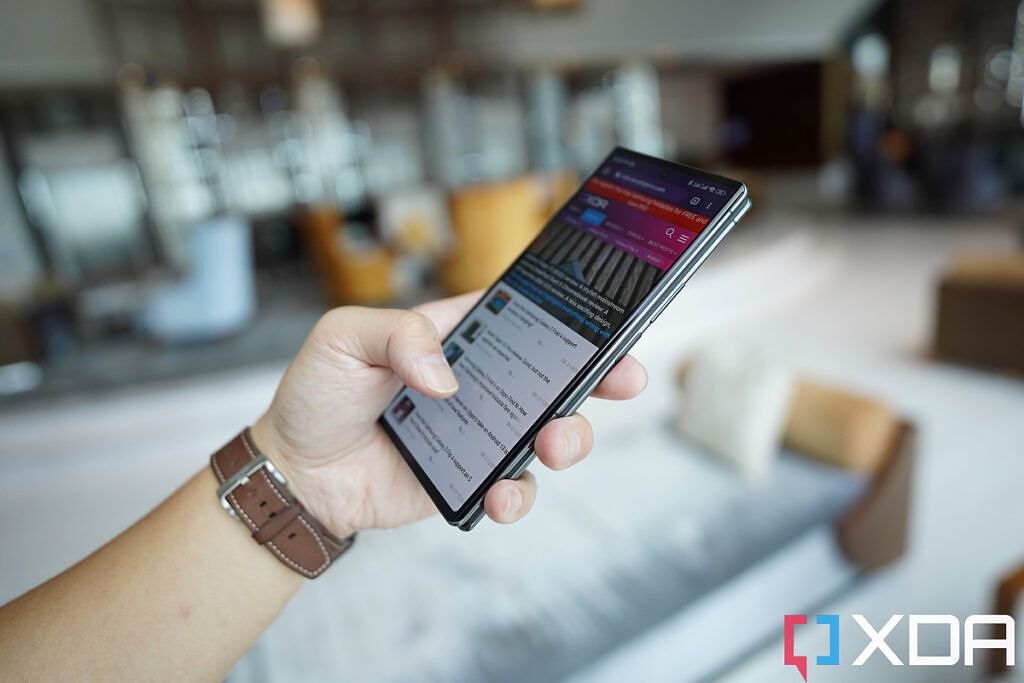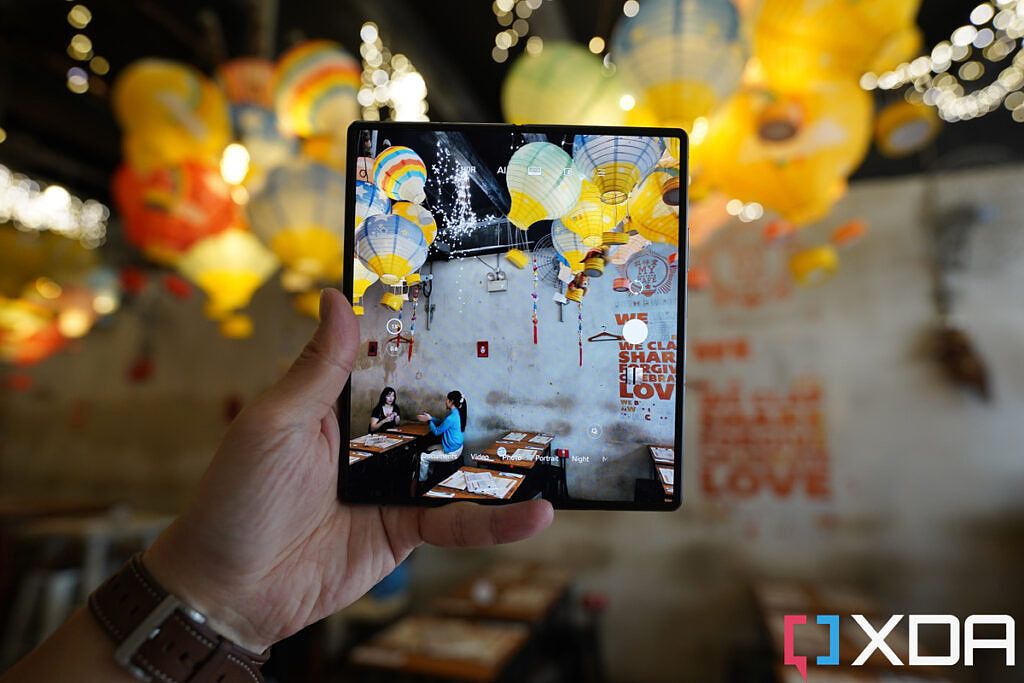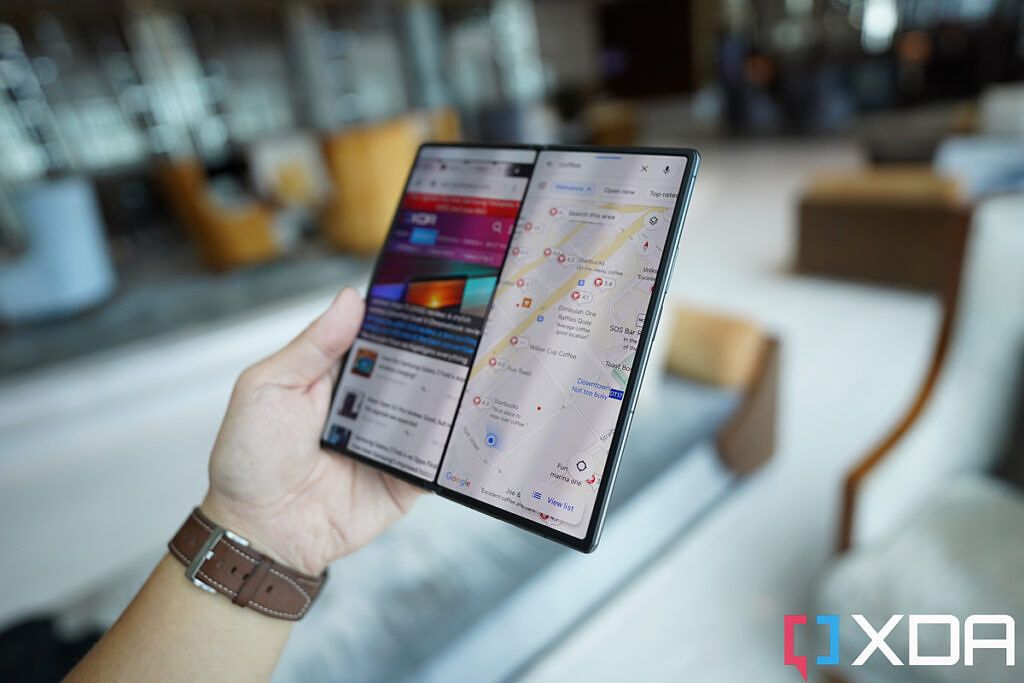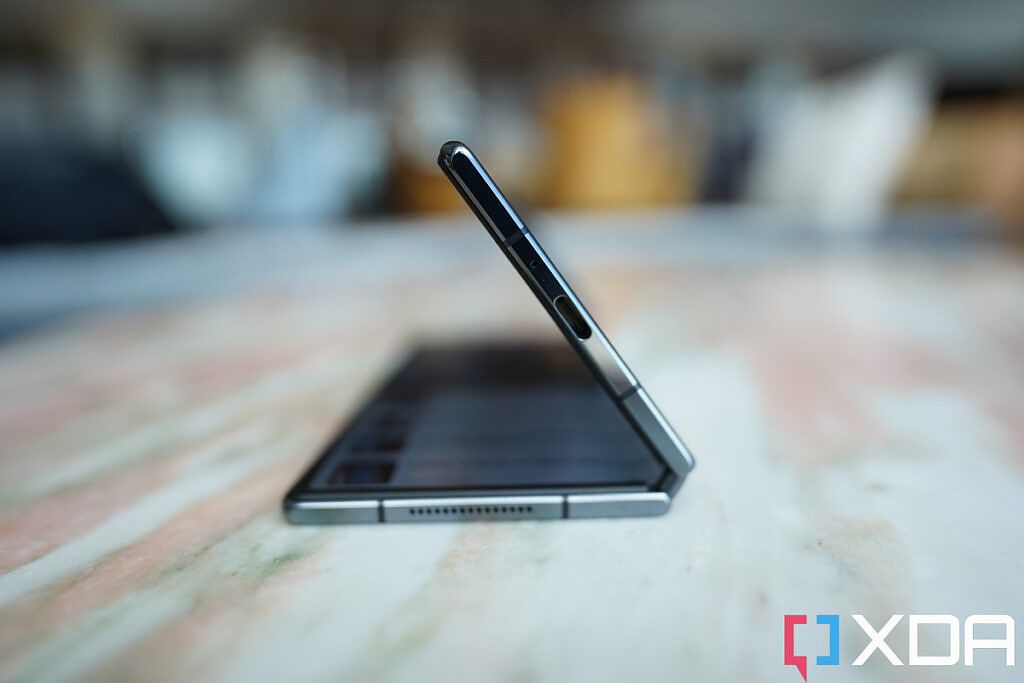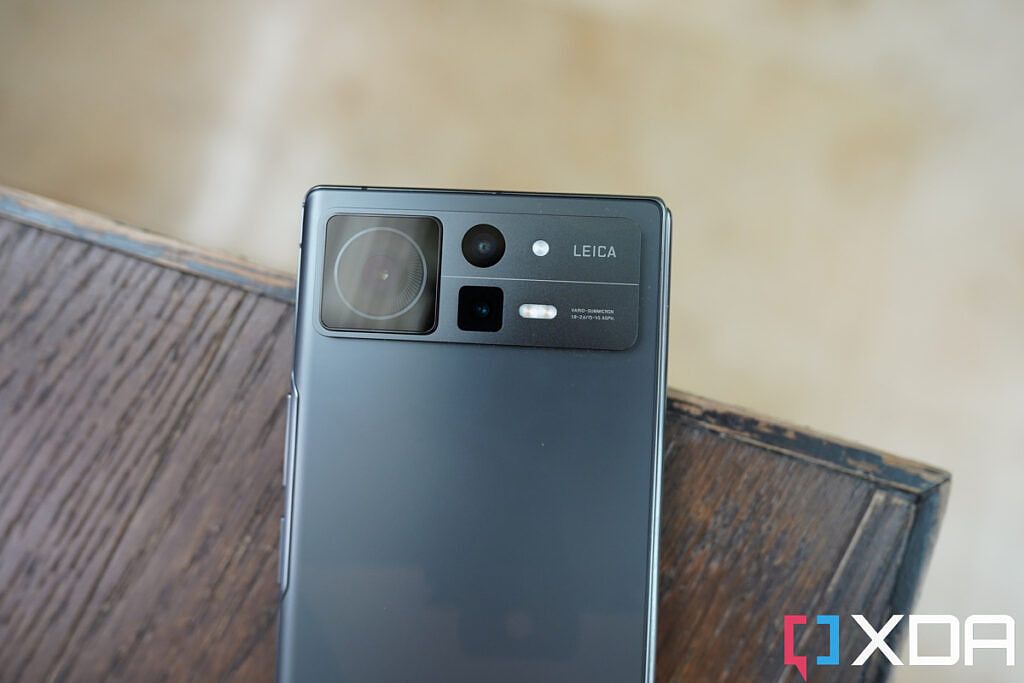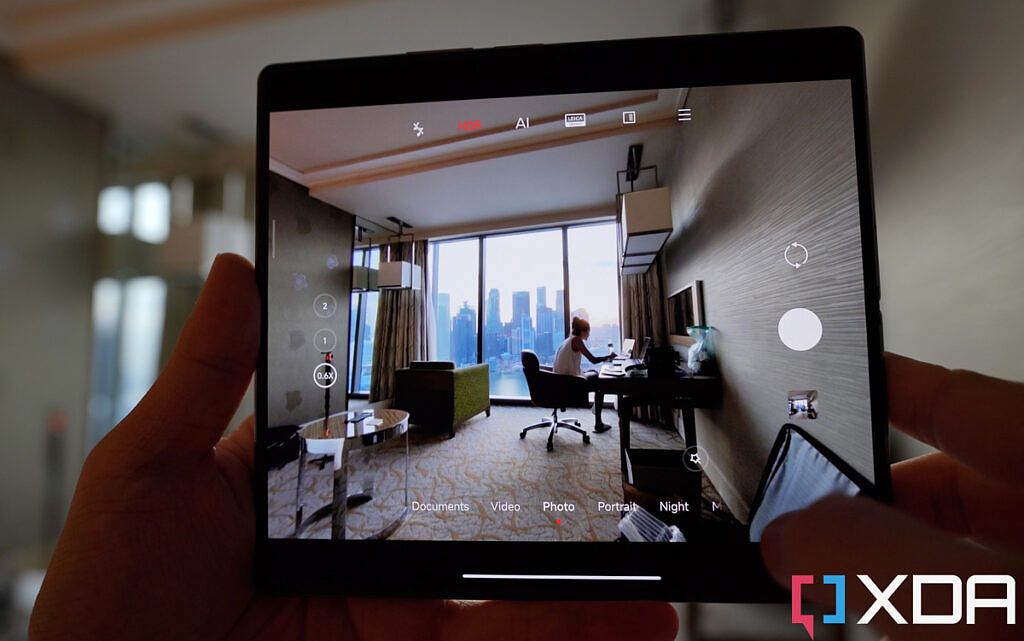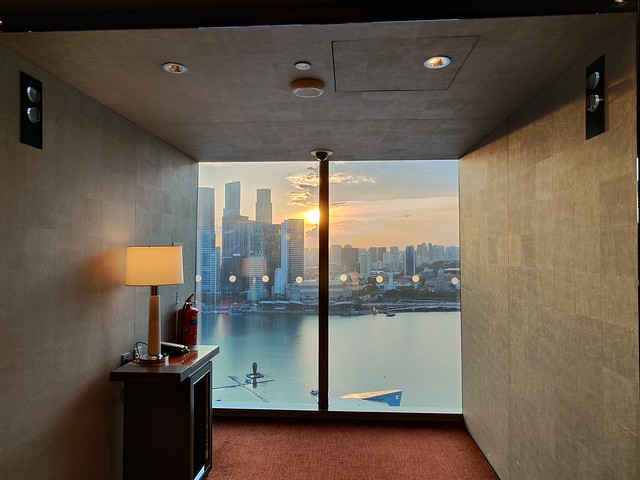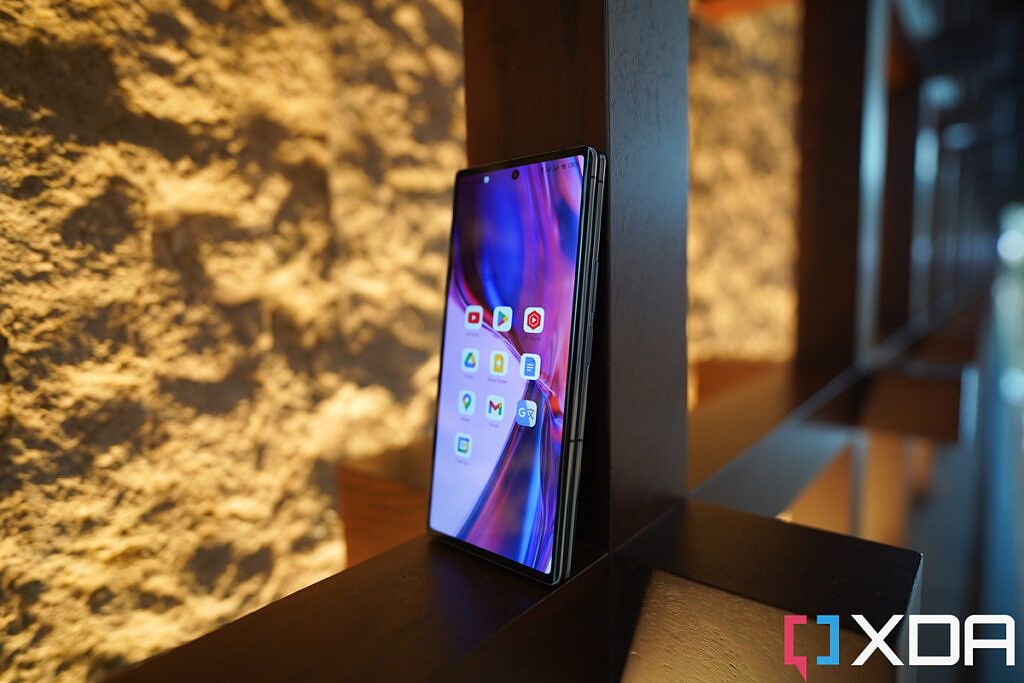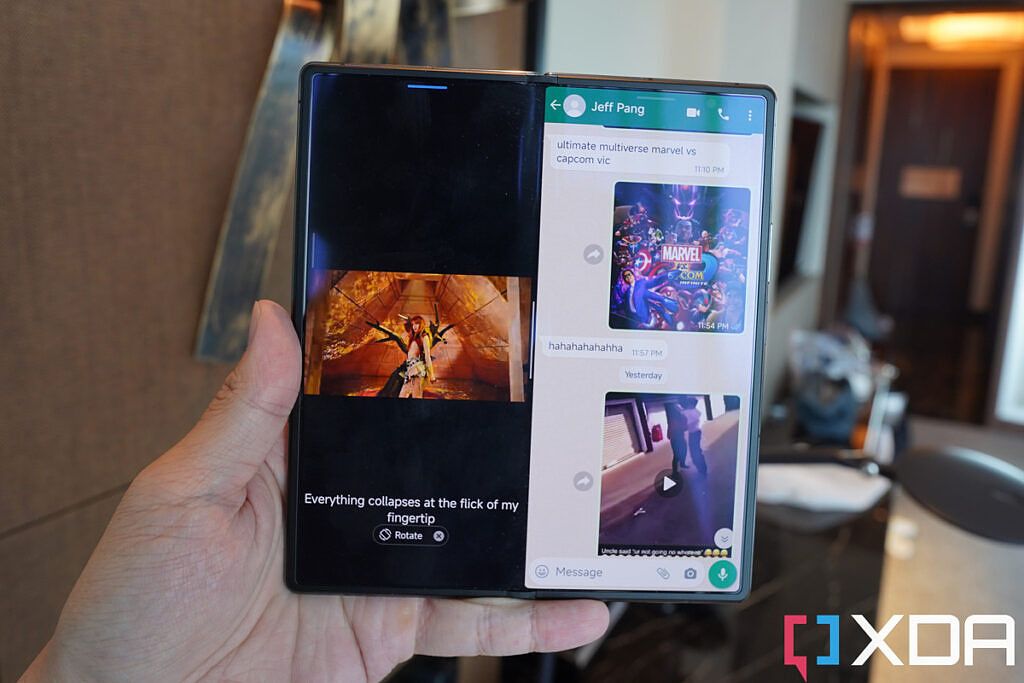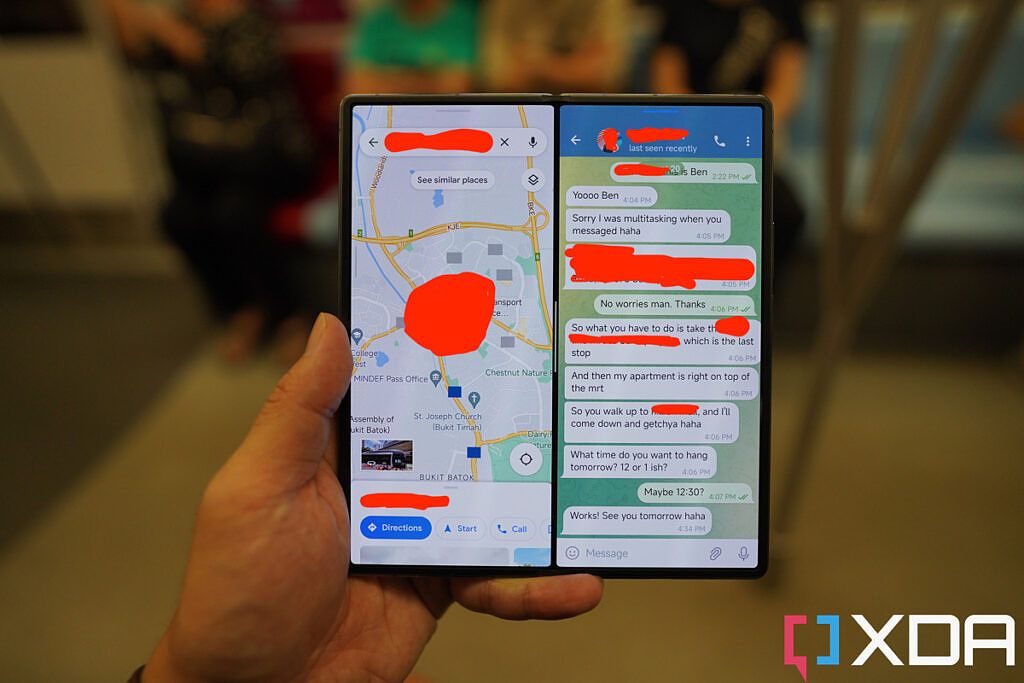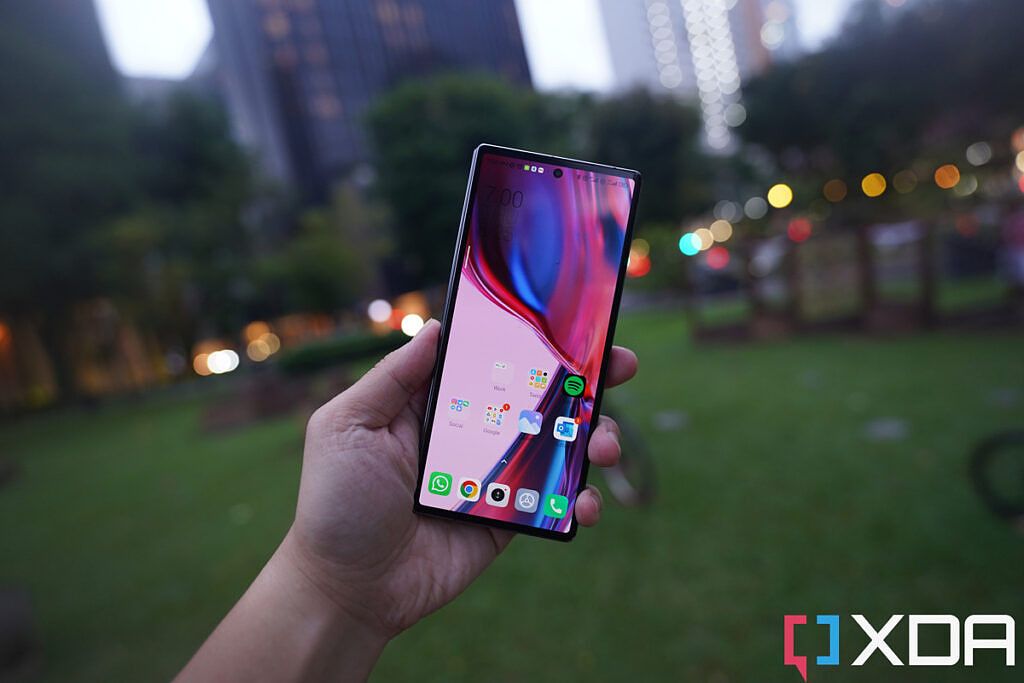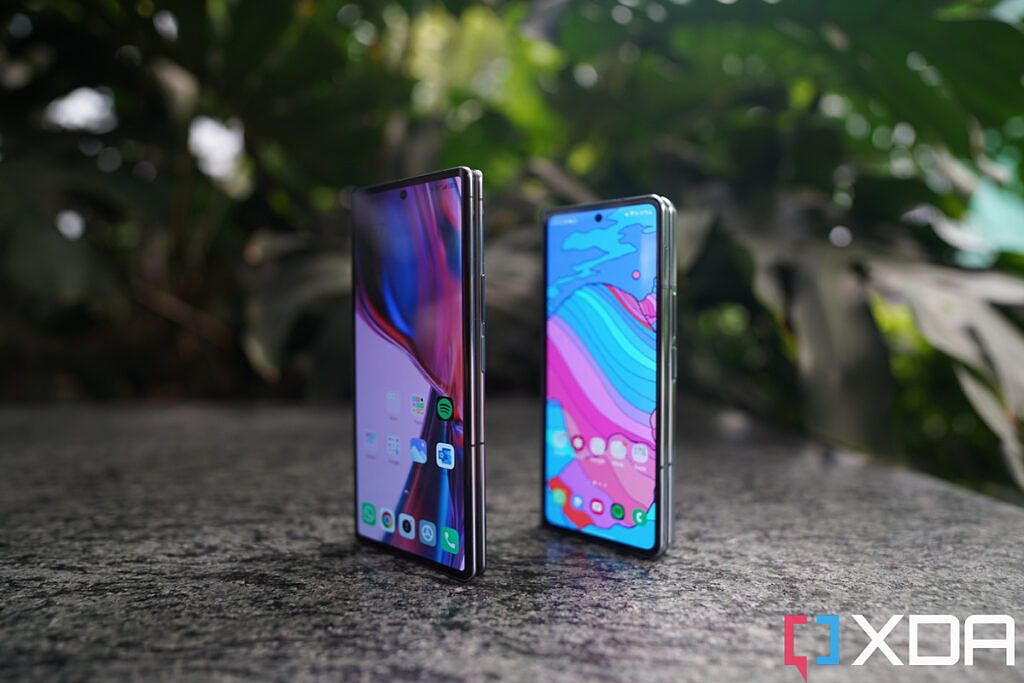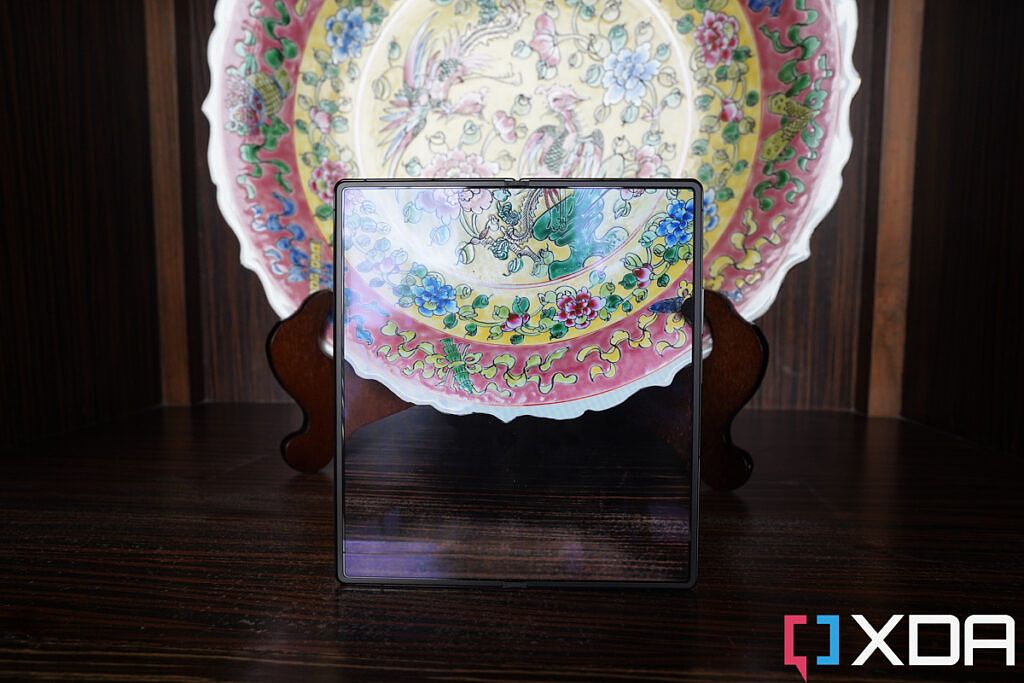Quick Links
The Xiaomi Mix Fold 2 is the first foldable phone I prefer using in the folded form more than unfolded. This is simultaneously a testament to Xiaomi's hardware engineering prowess and an indictment of Chinese brands' tendency to abandon hardware decisions after just a year. Often, these year-to-year direction shifts are for the better, but sometimes they could leave a product line feeling disjointed. Looking at the Xiaomi Mix Fold 2, it looks like a sequel to the Huawei Mate X2 more than Xiaomi's own Mix Fold.

But still, there's a lot to like with the Mix Fold 2, including and especially the fact that this is the lightest and thinnest large foldable on the market. No foldable phone before it -- at least not the dual screen, inner folding ones -- had ever felt so sleek in folded form.
Unfortunately, the Mix Fold 2 is only selling officially in China for now, but its relatively inexpensive (for a foldable) starting price of 8999 yuan ($1,320) does make importing an option for enthusiasts.
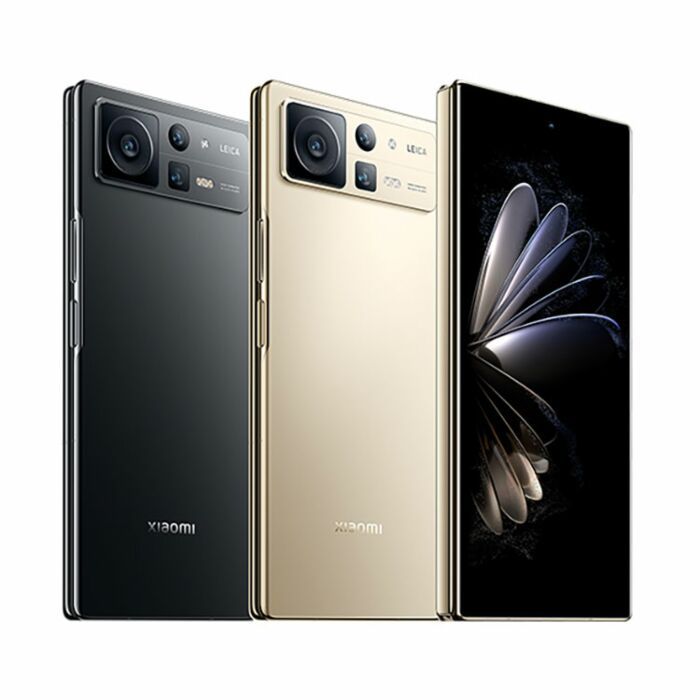
Xiaomi Mix Fold 2
If you are interested in foldables but found them too heavy and bulky before, the Xiaomi Mix Fold 2 may be of interest to you. Unfortunately, the phone is selling only in China for now.
Xiaomi Mix Fold 2: Specifications
|
Specification |
Xiaomi Mix Fold 2 |
|---|---|
|
Build |
|
|
Dimensions & Weight |
|
|
Display |
|
|
SoC |
Qualcomm Snapdragon 8 Plus Gen 1 |
|
RAM & Storage |
|
|
Battery & Charging |
|
|
Security |
Side-mounted fingerprint scanner |
|
Rear Camera(s) |
|
|
Front Camera(s) |
20MP |
|
Port(s) |
USB Type-C |
|
Audio |
|
|
Connectivity |
|
|
Software |
MIUI Fold 13 based on Android 12 |
|
Other Features |
|
About this review: Xiaomi China provided me with a Mix Fold 2 to test. This review was written after nine days of using the phone. Xiaomi did not have any input in this article.
Xiaomi Mix Fold 2: Design and Hardware
- Incredibly thin at 5.4mm unfolded and 11.2mm folded
- Feels more like a slab phone when folded than any other previous foldable
- The hinge cannot stay in place mid-fold
- Snapdragon 8 Plus Gen 1
The Xiaomi Mix Fold 2 is yet another dual-screen, inner folding book-like foldable in the mold of the Galaxy Fold series. This form factor is generally preferred over the outer folding, single screen format used by Huawei because the soft bending screen is protected when not in use. This form, however, is bulkier because it requires two displays. At least that was the case up until the Xiaomi Mix Fold 2.
In a feat of engineering marvel, Xiaomi has somehow slimmed the Mix Fold 2's thickness to just 5.4mm when opened, and 11.2mm when folded. This means when the Mix Fold 4 is opened, it's very likely the thinnest tablet in the world, with only e-ink tablets like the Remarkable 2 that can claim to be even more svelte. When the Mix Fold 2 is closed, it barely feels any thicker than a big modern flagship phone with a case, like the iPhone 13 Pro Max.
This ultra-thinness is backed by a relatively light (for a foldable) weight of 262g (again, barely heavier than an iPhone 13 Pro Max). Factor in the "normal" 20:9 aspect ratio of the outside screen, and we have a foldable phone that feels remarkably like a normal slab phone when folded.
Display and Form
When the Mix Fold 2 is opened, the main display is an 8-inch, 1914 x 2160, LTPO 2.0 OLED panel. It's covered by ultra-thin glass, has a maximum refresh rate of 120Hz, and looks great mostly. While the display crease at the folding point is nowhere near as harsh as the deep grooves found in Samsung's foldables, Xiaomi's is still slightly more visible than other Chinese foldables like the Oppo Find N or the Vivo X Fold.
So why did I say at the beginning that I like using the Mix Fold 2 in the folded form more than unfolded? It's because the Mix Fold 2's main screen has a square-ish 4:3.55 aspect ratio. This type of screen isn't suitable for handling Android apps (more on this later in the software section) and at 8-inches diagonally, is a bit too wider for me to hold with just one hand comfortably.
The original Xiaomi Mix Fold, you may remember, had a really elongated folded form with a 27:9 aspect ratio. Xiaomi boss Lei Jun reasoned at the time that the design was so the Mix Fold's main screen could keep a portrait orientation, which was superior -- and he was right! The first Mix Fold's inner large screen had an aspect ratio that was easier to one-hand use and displayed apps at a better scale.
This is also what I was referring to earlier about Chinese brands seemingly abandoning ideas after just a year: Lei made a big deal about the superiority of a portrait aspect ratio, only for the Mix Fold 2 to reverse course a year later. Don't get me wrong, the Mix Fold 2 is so, so much better looking and more modern than the original Mix Fold, but perhaps Xiaomi should have tried to continue to build on the original phone's ideas and form factor instead of going in another direction. This isn't just limited to hardware -- the "PC Mode" desktop UI that the original Mix Fold introduced has also been scrapped too. Say what you will about Apple and Samsung recycling designs, but those companies are confident about their design ideas and keep them consistent for at least a few years (though to be fair, they tend to keep them around for a couple years too long).
Hinge
The hinge feels sturdy and doesn't protrude from the side when folded the way Samsung's Galaxy Z Fold 1 to 3 did. But there's one glaring weakness: it cannot stay in place mid-fold, meaning it cannot pull off the so-called "Flex Mode" that has a foldable phone stay in an L shape like a laptop. Samsung pioneered this ingenious idea, and other foldables from Oppo and Vivo have followed suit. This L shape allows a foldable to essentially work as its own tripod for hands-free photos and videos.
I personally use Flex Mode often for taking photos of myself without needing a helping hand or tripod, and for taking hands-free video calls on the road. The omission here is glaring and my biggest nitpick about the Xiaomi Mix Fold 2.
The Mix Fold 2's omission of Flex Mode is my biggest gripe with this otherwise excellent foldable.
Internals: SoC, memory, battery, and other bits
Despite the sleek body, the Mix Fold 2 still managed to cram a 4,500 mAh battery inside, which coupled with the power-efficient Qualcomm Snapdragon 8 Plus Gen 1, has given me excellent battery life -- more on this further down the article. The battery can be charged via the included 67W charging brick that tops up the phone from 0-100% in 46 minutes from my testing.
However, the USB-C port is still 2.0 instead of the newer USB 3.1. This means slower transfer speeds, and an inability to output the phone's display to an external monitor.
Storage options come in 256GB, 512GB, or 1TB, and all are paired with 12GB of UFS 3.1 RAM. The fingerprint scanner is embedded into the power button on the side, and there are two symmetrical speakers located at the top and bottom, tuned by Harmon/Kardon. The haptic engine inside the Mix Fold 2 is solid, but not as precise and firm as the X-axis linear motor found in Xiaomi's flagship and mid-range phones. I'd say the haptics are fine, just not amazing.
Xiaomi Mix Fold 2: Cameras
- Very good main camera, solid ultra-wide, mediocre zoom
- Lack of "Flex Mode" is a glaring omission
The Mix Fold 2 has four cameras: a 20MP front-facing camera located in a hole-punch near the top of the secondary display, and a triple-lens main camera system comprising of a 50MP, f/1.8 main (wide) camera, a 13MP, f/2.4 ultra-wide camera, and an 8MP 2X telephoto zoom lens with an f/2.6 aperture. There is no selfie camera in the inside main screen.
Going purely by hardware, this is clearly not Xiaomi's top-of-the-line camera system. The Xiaomi 12S Ultra released last month packs a primary camera with a larger sensor, a custom-built eight-layer lens, and a 5X Periscope zoom lens. But it's not all about hardware: Xiaomi has been working hard to improve its computational photography in recent years, and the Mix Fold 2 still (apparently) got the Leica tuning that made its debut in the 12S Ultra. After a week of use and hundreds of photos, I can say the Mix Fold 2's cameras are quite good at producing vibrant colors and finding proper dynamic range even in difficult lighting conditions. Let's first take a look at photos snapped by the main camera system, plus maximum digital zoom.
We can see in the daytime set above that the cameras produced excellent dynamic range despite shooting against harsh backlight. I think sometimes we take for granted how smartphone cameras have become. If I try to shoot the same scene with a "real" camera or even a 2018 phone, it would have either blown out the sky completely, or the table area would be entirely drenched in shadows. In the second set at night, we can see color deviation between the main camera and the other three photos. Keeping colors consistent across all lenses and situations is something Xiaomi phones haven't quite mastered.
Most of Xiaomi's computational photography happens post snap, meaning if I point the phone at harsh backlight like below, the viewfinder shows an image that's completely blown out.
But the final image captured by the main and ultra-wide cameras has used HDR smarts to produce a balanced shot. I would have preferred if Xiaomi's viewfinder could intelligently do the processing in real-time and show me what the lighting would look like in the viewfinder, the way Pixel phones can.
I find the main camera to be very good overall, with the large-ish image sensor (for a foldable anyway), pixel binning, and Xiaomi's processing producing aesthetically pleasing night shots like below. Though sometimes the scene can be brightened so much that it no longer looks like a night photo.
The ultra-wide camera is good during the day too but at night it suffers from the usual soft details that plague almost all ultra-wide cameras not named the Oppo Find X5 Pro.
The only real gripe I have with the Mix Fold 2's cameras is the 2x telephoto zoom lens, which is objectively lacking in 2022. I'm not even comparing the Mix Fold 2's zoom to a Periscope zoom, but it loses to the 3X telephoto found in the Galaxy Z Fold 4 too.
By the way, all photos shown in this article have been compressed; I have uploaded full-resolution photo samples to the Flickr Gallery below.
Xiaomi Mix Fold 2: Software
- Runs on a special version of MIUI called MIUI Fold
- Some first-party Xiaomi apps are optimized for the tablet screen, but many third-party apps are not
- Will take 20-plus minutes to install Google, delete bloatware, and ensure push notifications come through in a timely manner
The Xiaomi Mix Fold 2 runs a special version of the company's MIUI, named MIUI Fold, on top of Android 12. The lack of Android 12L or 13 is disappointing, but MIUI Fold is well thought out, with an easy-to-activate multi-tasking system that allows quick ways to launch apps in small floating window mode.
However, the software so far isn't as polished as Samsung's Fold series software. For example, in split-screen multi-tasking, you can only split two apps vertically, not horizontally. This is fine for most apps, but for YouTube or other video apps like Netflix, it's much better to be able to split horizontally, as videos get more room to spread. Look at how a YouTube video looks in a split-screen view on MIUI Fold currently.
Still, I am someone who runs around town doing work and social things with my phone often, and I appreciate the larger canvas -- even if it usually requires two hands in tablet form. Last weekend, I met up with a friend in Singapore, and I was navigating on Google Maps on one screen while asking him for directions on the other. Sure, I can do this on a normal phone too, but the Maps area would be too cramped. I also enjoy using the larger screen to read press releases and spec sheets.
As mentioned, the Mix Fold 2 is only available in China, so the phone does not come with Google apps pre-installed. However, Google's Mobile Services framework is on the phone, so all I had to do was install Google Play Store (available directly in Xiaomi's own app store or trusted third-party sites), and I could begin installing all the typical apps people outside China use, like YouTube, Google Maps, Facebook, etc.
There's also quite a bit of Chinese app bloatware, but almost all can be uninstalled. A bigger potential issue for those who choose to import is delayed notifications due to aggressive battery management. This is something almost all China versions of a phone software do (this includes Xiaomi's MIUI, Oppo's ColorOS, Vivo's OriginOS, etc).
But good news -- you can fix this too, by jumping into settings and turning off battery optimization for apps you would like to receive notifications in a timely manner. Once I did that, I was able to get notifications to come through normally as if I was using an iPhone. Overall, it does take a good 20-30 minutes to get the China version of MIUI running here to look and behave like an international Android phone (replacing Chinese apps with Google apps, receiving timely notifications, etc). But that is alright since this phone was never intended to leave the Chinese market in the first place.
Xiaomi Mix Fold 2: Performance and battery life
- All-day battery life
- Smooth animations
With a Snapdragon 8 Plus Gen 1, performance and battery life have been mostly good. I have been using the phone heavily for over a week and in that time, I have experienced almost no issue, save for one time Gmail froze and crashed as I switched from a smaller to a larger screen. Animations are smooth, apps launch fast, the phone rarely heated up even when being used in very hot Singaporean afternoon weather, and the phone never ran out of battery before I finished my day. This China version of MIUI doesn't allow me to check the screen-on time, but I am guessing it's well over seven hours because I tend to have similar smartphone usage on non-work days.
I do have some gripes with overall performance: as mentioned in the software section, the Mix Fold 2's inability to split apps horizontally (the way Samsung's Folds can) means YouTube effectively can't be used with another app at the same time. The lack of a Flex Mode also takes away a myriad of use cases for foldables, such as hands-free selfies and group photos, time lapses, etc.
Xiaomi Mix Fold 2: Conclusion
To wrap up this review I must answer three questions:
- Does the Xiaomi Mix Fold 2 bring anything new to the category in which it belongs?
- Is the Xiaomi Mix Fold 2 better than the Galaxy Z Fold 4?
- Should you buy the Xiaomi Mix Fold 2?
The answer to the first is a definitive yes. Xiaomi managing to shave so much weight and heft from a large dual-screen foldable is nothing short of remarkable and corrects one of the earliest and longest complaints of these inner-foldable phones. And as I said already, using the Xiaomi Mix Fold 2 in folded form really feels like using a normal large flagship phone. This is something Samsung's Galaxy Z Fold 4 still has not achieved, due to the gap between the hinge that still needs the device feeling like a metallic hard shell taco instead of one solid slab.
Now, the second question -- is the Mix Fold 2 better than the Galaxy Z Fold 4? -- is trickier. There's no doubt that the Mix Fold 2 has a better in-hand feel, and the much less noticeable crease is another win for Xiaomi. The main cameras are close without a clear winner (at least for now). But the Z Fold 4 has superior multi-tasking capabilities, Flex Mode, and a better zoom lens. So if I must pick a winner, without factoring in price, I'd still say the Z Fold 4 is the better overall device.
Even if you can't buy the Mix Fold 2, it's still great it exists because it shows what's possible with foldables
Finally, should you buy the Mix Fold 2? If this phone was sold globally and was available in your market, I'd say a definitive yes. But because most readers will have to import, this becomes much trickier. Importing will add at least a couple hundred dollars to the $1,300-ish retail price, and you won't get any warranty, not to mention the game of chance you will play getting full network coverage in your region due to missing bands. In that situation, most buyers are better off getting the Z Fold 4 or hoping Xiaomi launches this globally later. With that said, however, there are phone enthusiasts who would import this in a heartbeat. A former colleague at XDA imported one. I know two people in Singapore who have. And I would import this too if Xiaomi hadn't given me access to a review device. But we are a very niche group: foldable enthusiasts.
Even if most of you reading this will not buy this device, it's still great that the Xiaomi Mix Fold 2 exists because it shows consumers what is possible. Maybe Samsung can get away with its thicker design for another year due to a lack of competition globally. But for other Chinese brands? Their next foldables must also slim down and at least get close to the Mix Fold 2's sleekness. There's no going back to thick and chunky foldables.

Xiaomi Mix Fold 2
The Xiaomi Mix Fold 2 that measures only 5.4mm thick when unfolded, making it the thinnest foldable yet. When folded, it feels barely thicker than a typical flagship phone with a case.

